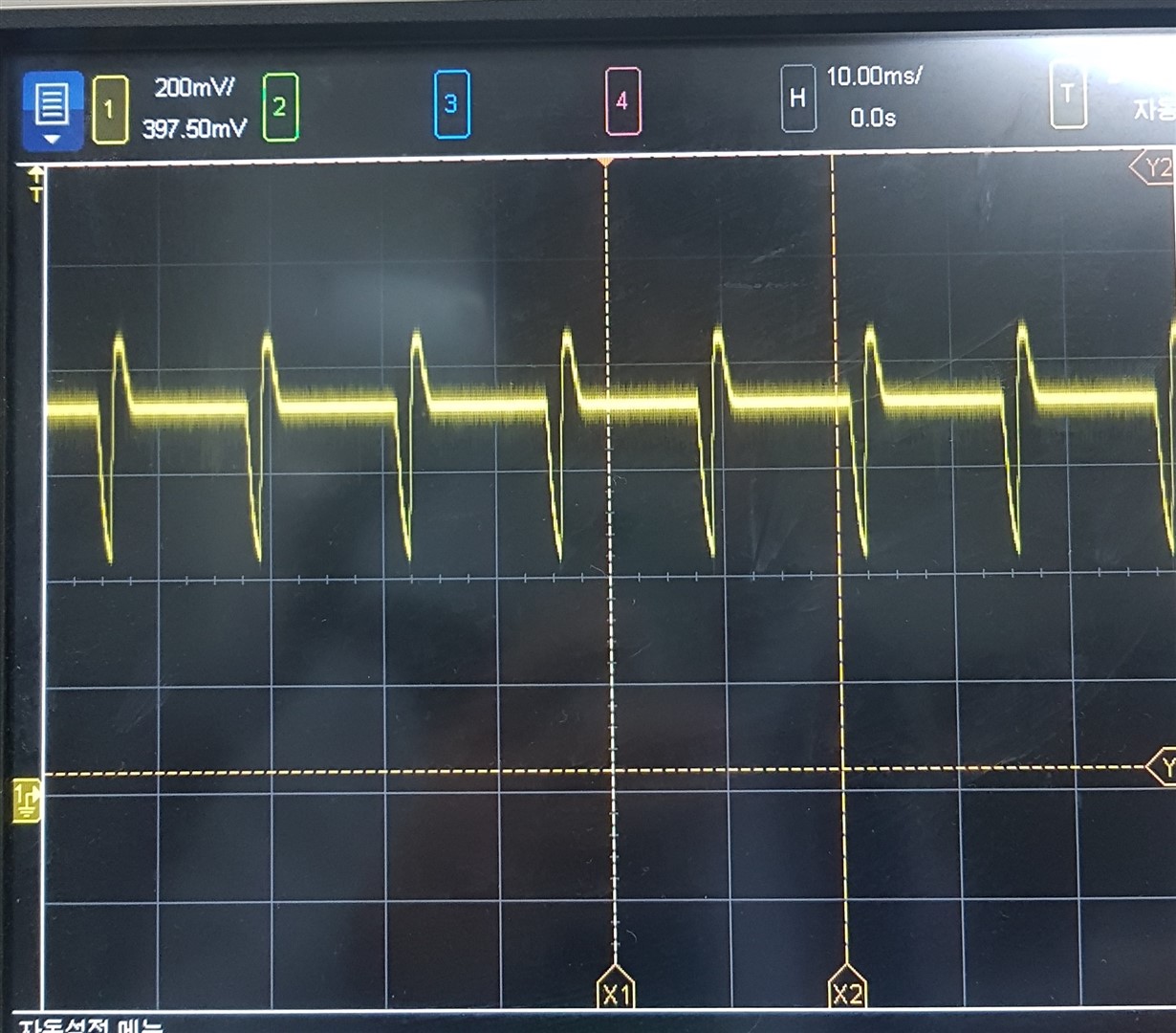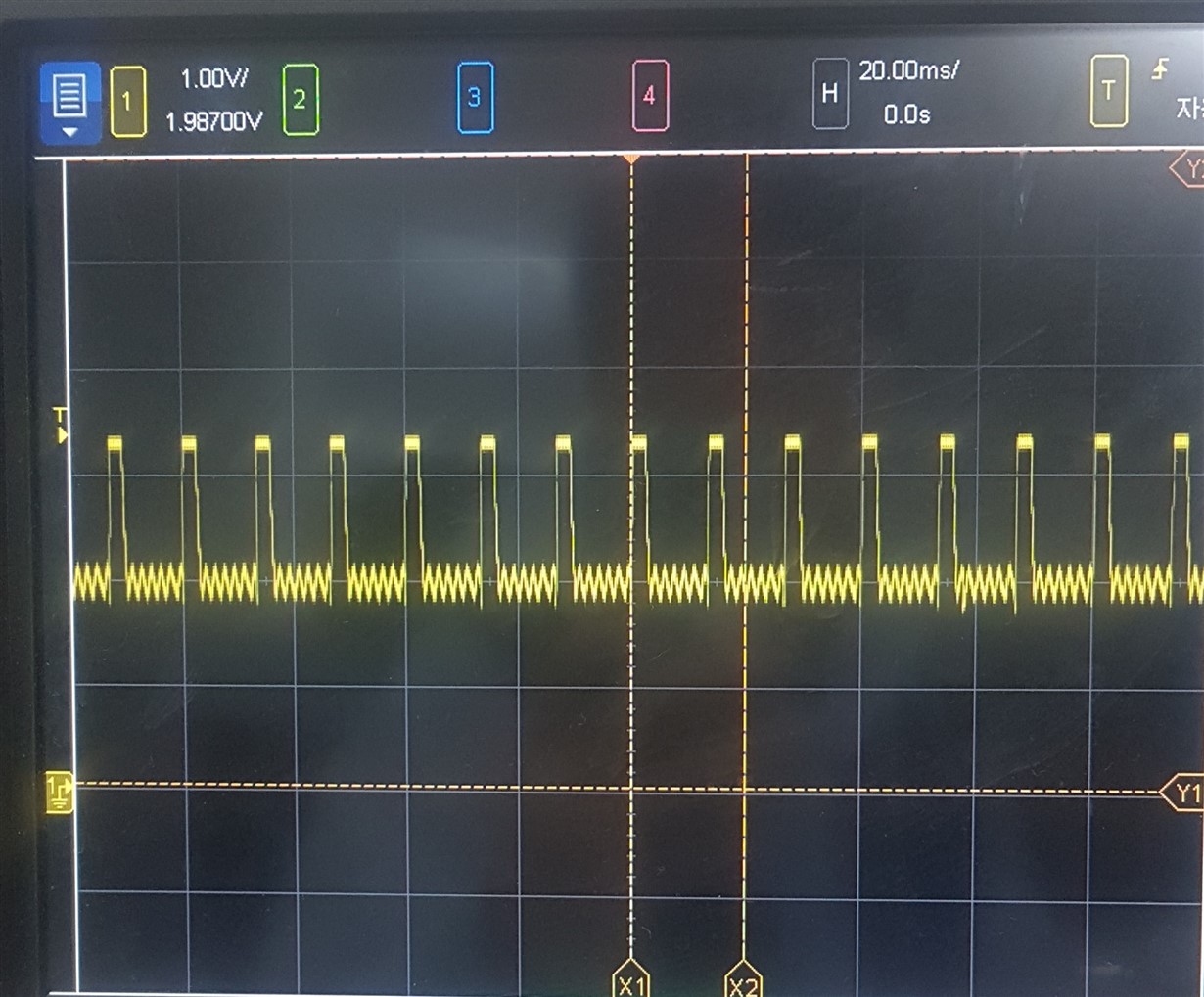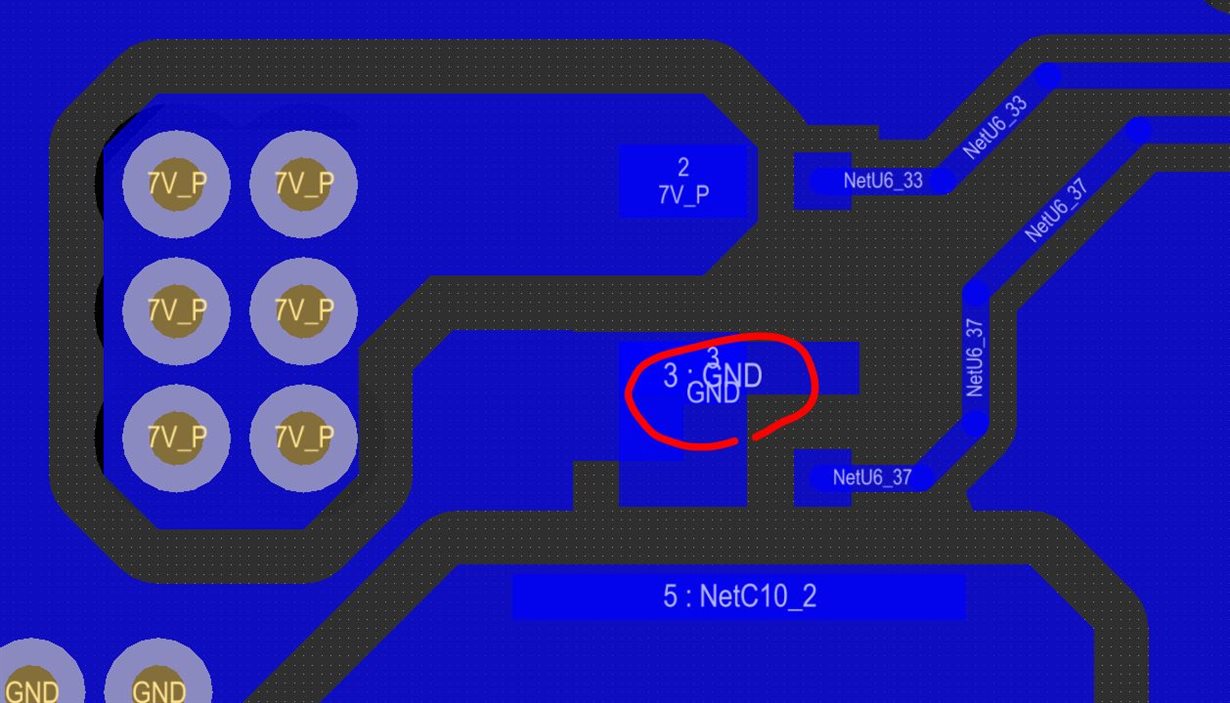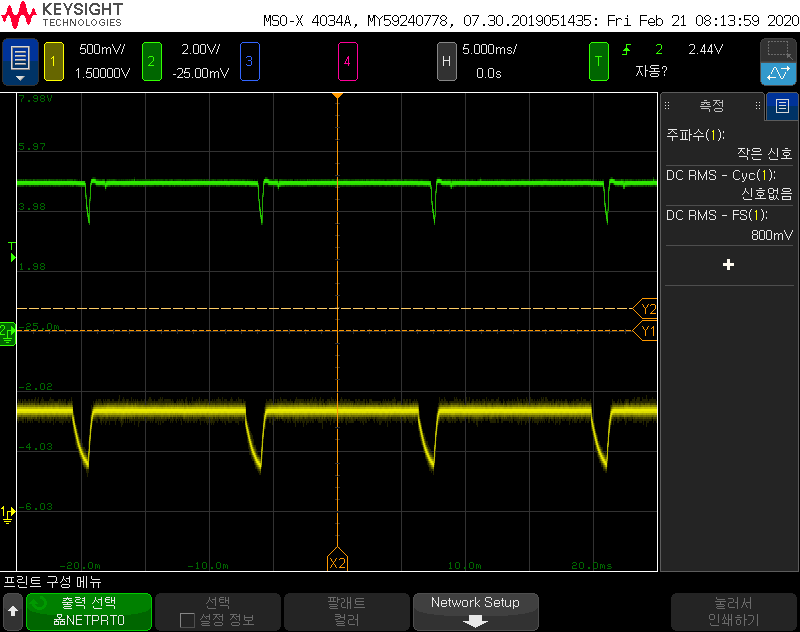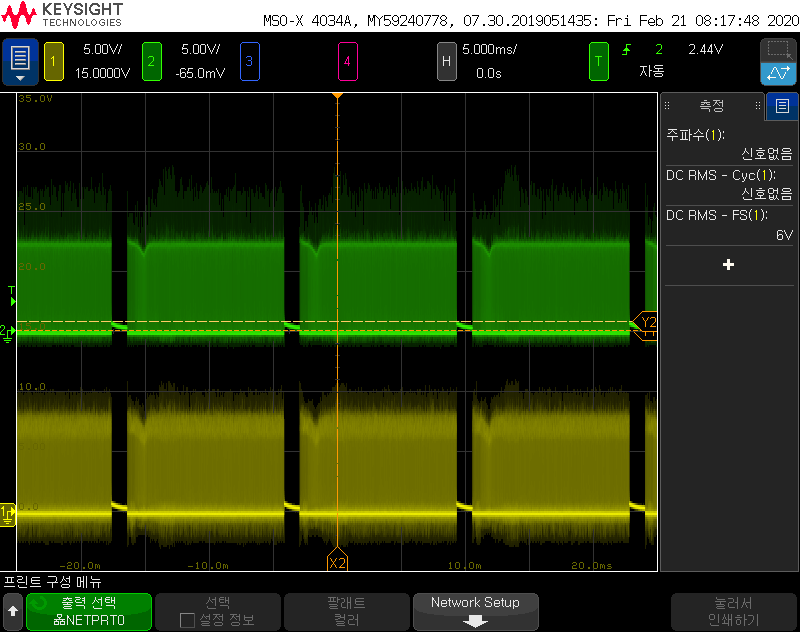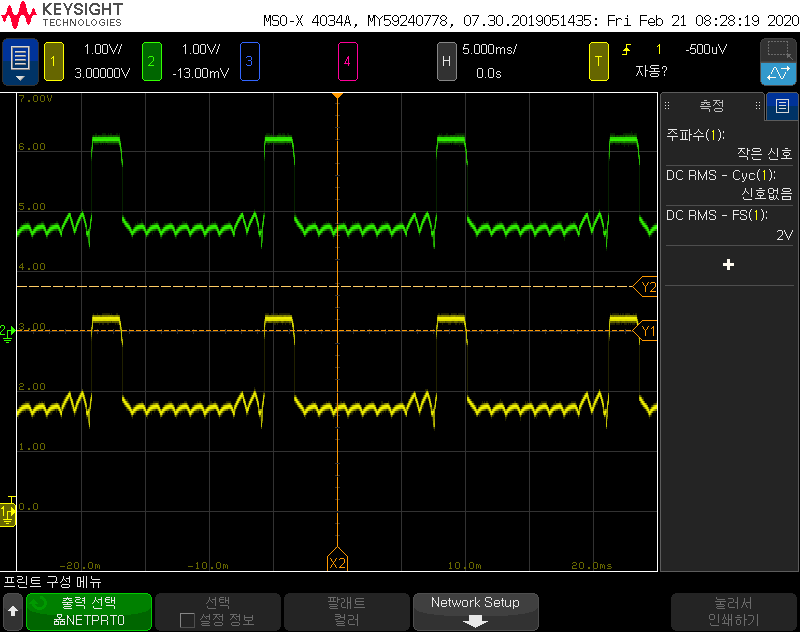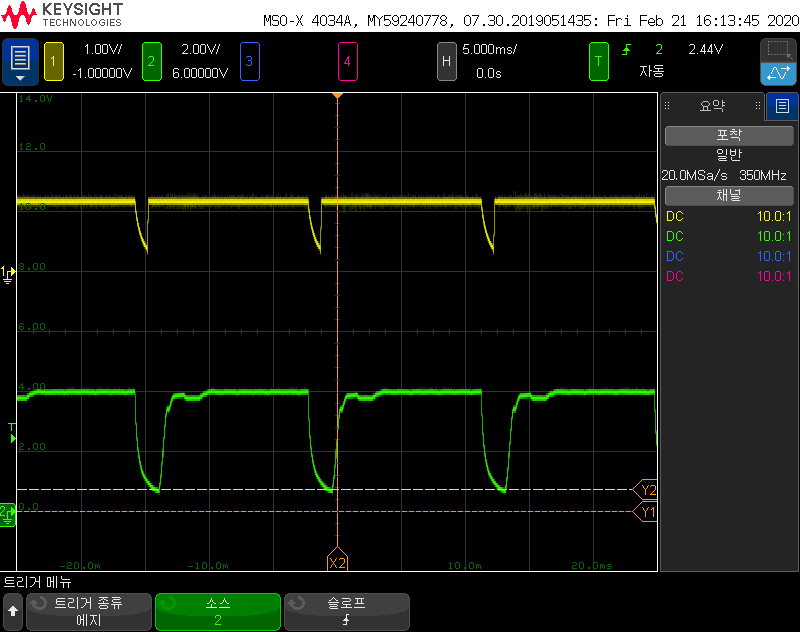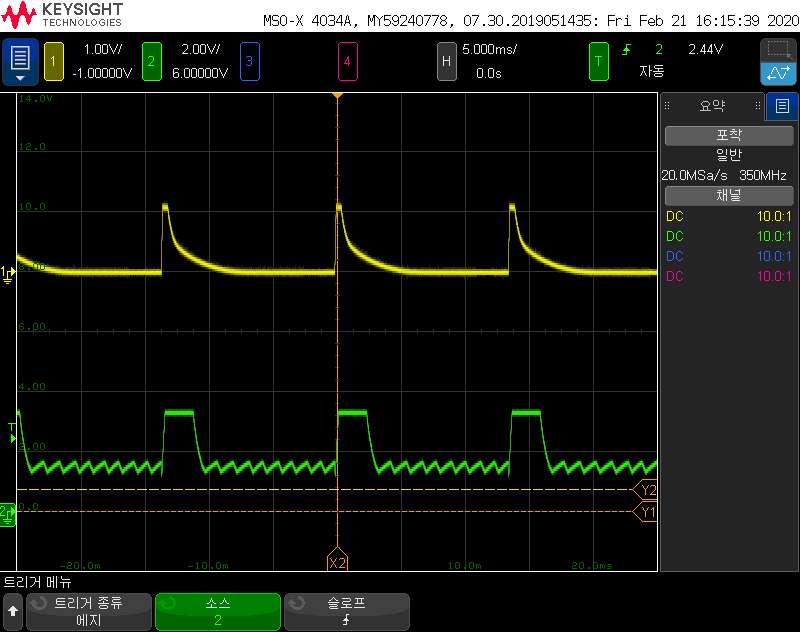Other Parts Discussed in Thread: USB2ANY, TPS650860EVM-116, IPG-UI, CSD87381P
Hi
I designed the TPS6508641 for ZU4EG.
When I power up, buck2(0.85V) drop as shown below.
I attached my schematic.
One thing the sure, buck1 output is normal.
but when Buck2 output occur, Buck1 also dropped like the above picture.


